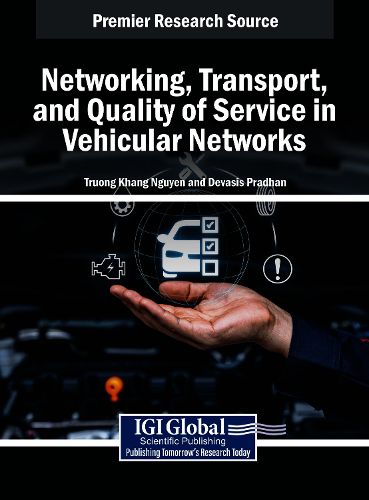Readings Newsletter
Become a Readings Member to make your shopping experience even easier.
Sign in or sign up for free!
You’re not far away from qualifying for FREE standard shipping within Australia
You’ve qualified for FREE standard shipping within Australia
The cart is loading…






This title is printed to order. This book may have been self-published. If so, we cannot guarantee the quality of the content. In the main most books will have gone through the editing process however some may not. We therefore suggest that you be aware of this before ordering this book. If in doubt check either the author or publisher’s details as we are unable to accept any returns unless they are faulty. Please contact us if you have any questions.
As vehicles become connected through technologies such as vehicle-to-vehicle (V2V) and vehicle-to-infrastructure (V2I), ensuring seamless communication between vehicles, road infrastructure, and data centers is critical. Networking protocols must address the challenges posed by high mobility, dynamic topologies, and varying communication environments. Meanwhile, transport protocols ensure data is reliably delivered with minimal latency, while quality of service (QoS) mechanisms are essential to prioritize critical applications. By optimizing these components, vehicular networks can provide enhanced driver safety, improve traffic management, and support the development of autonomous vehicles, all while meeting the demand for bandwidth and connectivity in intelligent transportation systems. Networking, Transport, and Quality of Service in Vehicular Networks explores the interplay between vehicular communication systems, network infrastructure, transport protocols, and QoS management. It delves into the challenges and opportunities presented by the dynamic nature of vehicular environments, offering insights into effective strategies for ensuring reliable and efficient communication, seamless transport, and optimal quality of service for diverse vehicular applications. This book covers topics such as fuzzy learning, smart cities, and traffic control, and is a useful resource for urban developers, civil engineers, transportation professionals, computer scientists, academicians, and researchers.
$9.00 standard shipping within Australia
FREE standard shipping within Australia for orders over $100.00
Express & International shipping calculated at checkout
This title is printed to order. This book may have been self-published. If so, we cannot guarantee the quality of the content. In the main most books will have gone through the editing process however some may not. We therefore suggest that you be aware of this before ordering this book. If in doubt check either the author or publisher’s details as we are unable to accept any returns unless they are faulty. Please contact us if you have any questions.
As vehicles become connected through technologies such as vehicle-to-vehicle (V2V) and vehicle-to-infrastructure (V2I), ensuring seamless communication between vehicles, road infrastructure, and data centers is critical. Networking protocols must address the challenges posed by high mobility, dynamic topologies, and varying communication environments. Meanwhile, transport protocols ensure data is reliably delivered with minimal latency, while quality of service (QoS) mechanisms are essential to prioritize critical applications. By optimizing these components, vehicular networks can provide enhanced driver safety, improve traffic management, and support the development of autonomous vehicles, all while meeting the demand for bandwidth and connectivity in intelligent transportation systems. Networking, Transport, and Quality of Service in Vehicular Networks explores the interplay between vehicular communication systems, network infrastructure, transport protocols, and QoS management. It delves into the challenges and opportunities presented by the dynamic nature of vehicular environments, offering insights into effective strategies for ensuring reliable and efficient communication, seamless transport, and optimal quality of service for diverse vehicular applications. This book covers topics such as fuzzy learning, smart cities, and traffic control, and is a useful resource for urban developers, civil engineers, transportation professionals, computer scientists, academicians, and researchers.